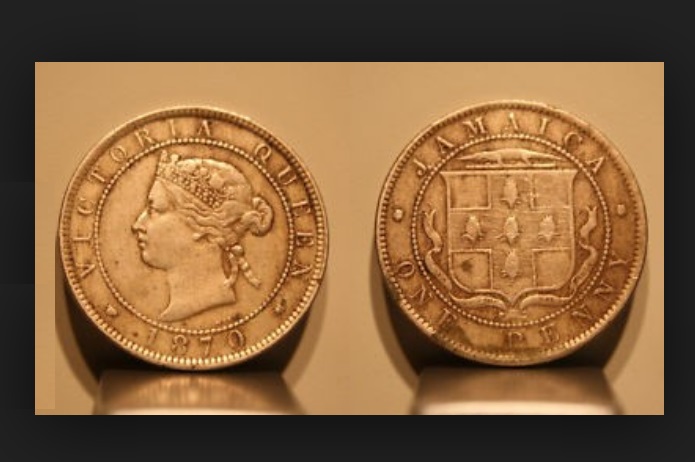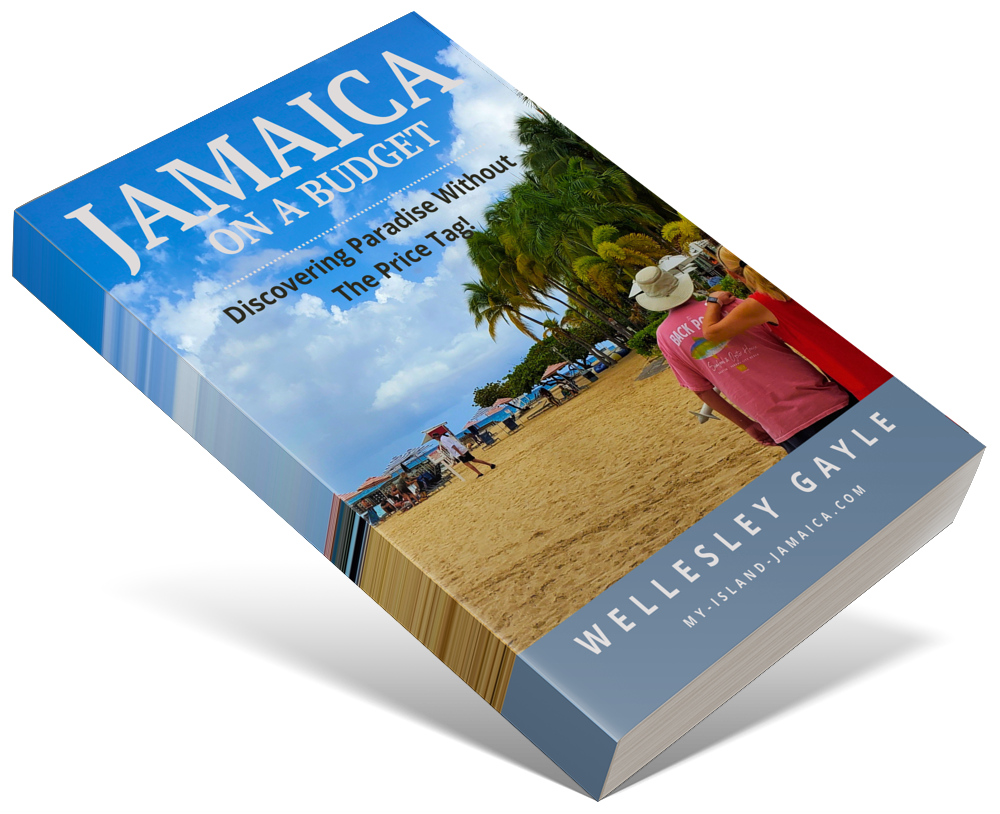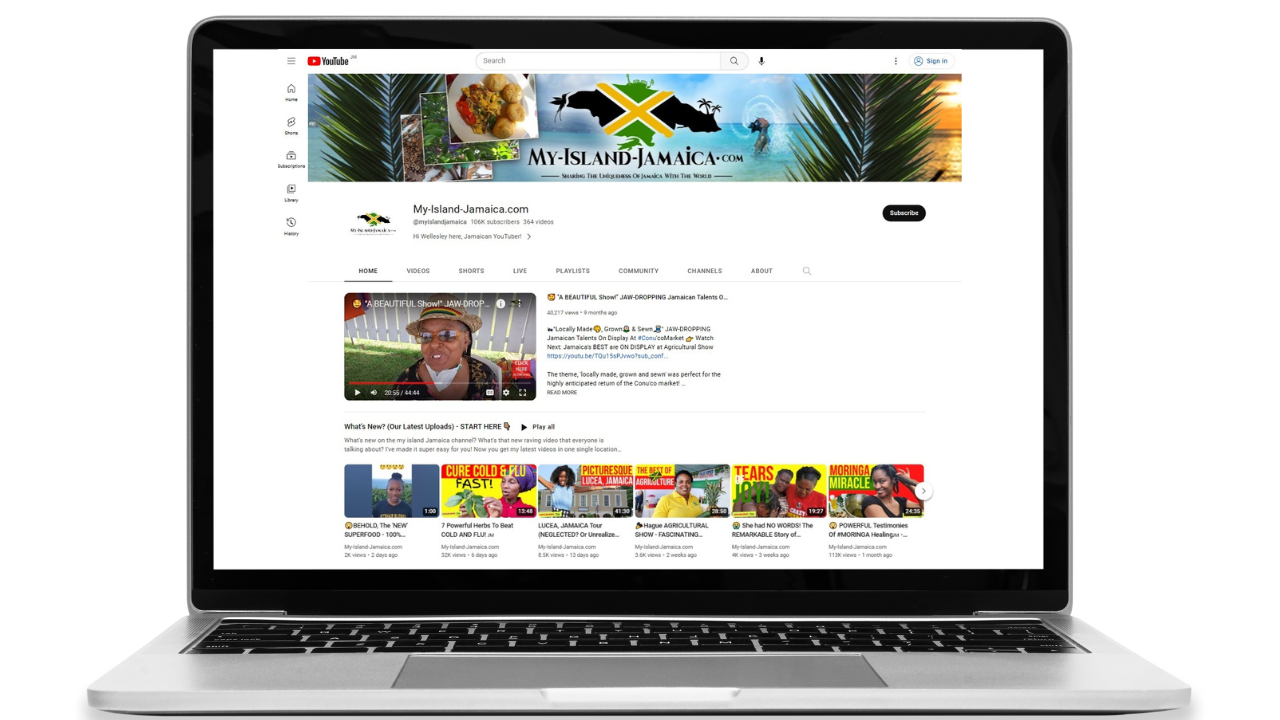Subscribe for all my updates and don't miss a thing! Sign me up!
Jamaican 1 penny coin - 1370 or 1870?
by Paul
(UK)
Question about: Jamaican 1 penny coin.
I have inherited some coins from a relative and this one has caught my eye is a Jamaican one penny dated 1370 and I would like to know more about it.
The coin has picture of a monarch on one side and a coat of arms.
Anyone know anything about the history or currency of the period?
Answered by Wellesley Gayle
Hi Paul,
Thanks for asking!
I doubted if the date on the coin was really 1370 and so I did some research and actually found that it might not be, but rather, the year 1870.
The "8" might have been faded so it looks like a "3".
The monarch that you saw on one side is actually Queen Victoria of the British monarch and the coat of arms, as you stated, is on the other side.
Why not 1370?
In 1370, Jamaica was not yet 'discovered' by the Europeans. It was only in the year 1494 that Christopher Columbus, the Spanish voyager, came here.
Before that, it was mainly bartering between the tainos who were here.
Be sure to read more about the history of Jamaica here.
The first units of exchange used by the Spaniards (who came with Columbus in 1494) in their dealings with the Tainos, were items such as glass beads and trinkets, scissors and mirrors. They later used copper maravedis.
When the British captured Jamaica from the Spanish in 1670, Spanish coins continued to circulate but in 1822, they started using British coins.
Jamaican coins though, were not officially created until 1869
when denominations of penny (1d) and half-penny (1/2d) were issued.
That coin then was apparently issued the year after (1870).
Thanks to worthpoint, I managed to get a picture of one of them (see below, showing both head and tail)
I hope this was helpful.
Be sure to read more about the Jamaican currency here.
Regards,
Wellesley
P.S. Here, below is the 500 year timeline (actually 509 years) of the Jamaican currency, between 1509 and 2018, by the Bank Of Jamaica
1509 Spaniards settle Jamaica and introduced copper maravedis
1655 British captured Jamaica from the Spaniards but Spanish coins
continued to circulate
1822 First British coins to be used in Jamaica in denominations of
¼, 1/8, 1/16 dollar. Came to be known as 'anchor money' because of the design.
1825 British silver and copper coins introduced in general circulation
1834 British silver 3d and 11/2d coins introduced into Jamaica
1836 First commercial bank, the Bank of Jamaica established
1837 Colonial Bank, incorporated in England in 1836, begin operations in Jamaica
1839 Planters Bank established and issues bank notes
1840 British currency legal tender of Jamaica
1848 Planters Bank terminated its operations
1864 London and Colonial Bank began operating in Jamaica
1864 Bank of Jamaica ceased operations
1865 London and Colonial Bank closed
1869 First Jamaican coins issued in denominations of penny (1d) and half-penny (1/2d)
1880 First Jamaican farthing issued
1889 Branch of Bank of Nova Scotia Ltd established in Jamaica
1900 Bank of Nova Scotia issues bank notes in denominations of £1 and £5 pounds
1911 Royal Bank of Canada begins operating in Jamaica
1920 First Government of Jamaica bank notes issued in denominations of 2/6,5/- and 10/-
1922 2/6 note withdrawn from circulation
1925 Colonial Bank incorporated with Barclays Bank
1926 Barclays Bank incorporated with the Anglo-Egyptian Bank and the National Bank
of South Africa. Group known as Barclays Bank, Dominion, Colonial and
Overseas (DCO) Notes issued in name of Barclays Bank D.C.O.
1939 Currency Board established
1940 Government of Jamaica issues £1 and £5 notes
1954 Private commercial banks prohibited from issuing bank notes
1958 Commercial bank notes demonetized
1960 Bank of Jamaica (central bank) established.
1961 Bank of Jamaica began operations. Notes issued in denominations of
5/-, 10/- 1 and £5
1962 Jamaica gained independence from Great Britain.
No change in notes and coins in circulation.
1969 Jamaica changed to a decimal system of currency (8 September) using dollars
and cents Coins issued in denominations of 1c, 5c, 10c , 20c, 25c,
Notes issued in denominations of 50c, $1, $2and $10
1970 $5 note introduced
1970 Metallic content of 1c changed from copper to bronze
1975 New aluminium 1c coins introduced
1976 50c note replaced by a coin and $20 note introduced
1978 New $10 and $20 introduced. Old notes demonetized
1985 Size of notes standardized and blind feature introduced
1986 $100 note introduced
1988 $50 note introduced
1990 $1 note replaced by a coin
1991 New 25c and 10c coins introduced
1993 Metallic content of $1 coin changed from nickel-brass to brass-plated steel
1994 $500 note introduced
1994 $5 coin issued to replace $5 note
1994 New nickel-plated $1coin introduced
1995 New 25c and 10c coins introduced
1995 Old coins (5c, 10c, 20c, 25c, 50c and $1) issued
prior to December 1994 demonetized
1997 $10 note replaced by a coin
2000 $1000 note introduced and $20 note replaced by coin
2009 $5000 note introduced
2018 Demonetization of 1c,10c and 25c coins
Source
References:
- http://boj.org.jm/currency/currency_history.php
- https://www.worthpoint.com/worthopedia/1870-jamaica-queen-victoria-one-penny-247838166
- https://www.real-jamaica-vacations.com/jamaican-money.htmlhttp://boj.org.jm/currency/currency_history.php
New! Get My Latest Book👇🏿
|
You asked, I've answered! You no longer need to save for months or years, to enjoy paradise! I spilled the beans! sharing my top tips on finding cozy accommodations and secret gems, only the way a native could! Click Here to pick it up on my e-store and start saving now! |
See The Best Of Jamaica - In Videos!
|
My channel reaches over 140,000 subscribers worldwide and has leveraged over 11 million views, sharing, what I call 'The Real Jamaica'. Subscribe today and join our family of viewers. |
Read More ...
New! Experience The REAL Jamaica!
Book Your Private Tour here and experience Jamaica the way we (locals) do!
P.S. Didn't find what you were looking for?
Still need help?
Click Here to try our dependable and effective Site Search tool. It works!
Or, simply click here and here, to browse my library of over 500 questions and answers! Chances are someone already asked (and got an answer to) your question.









